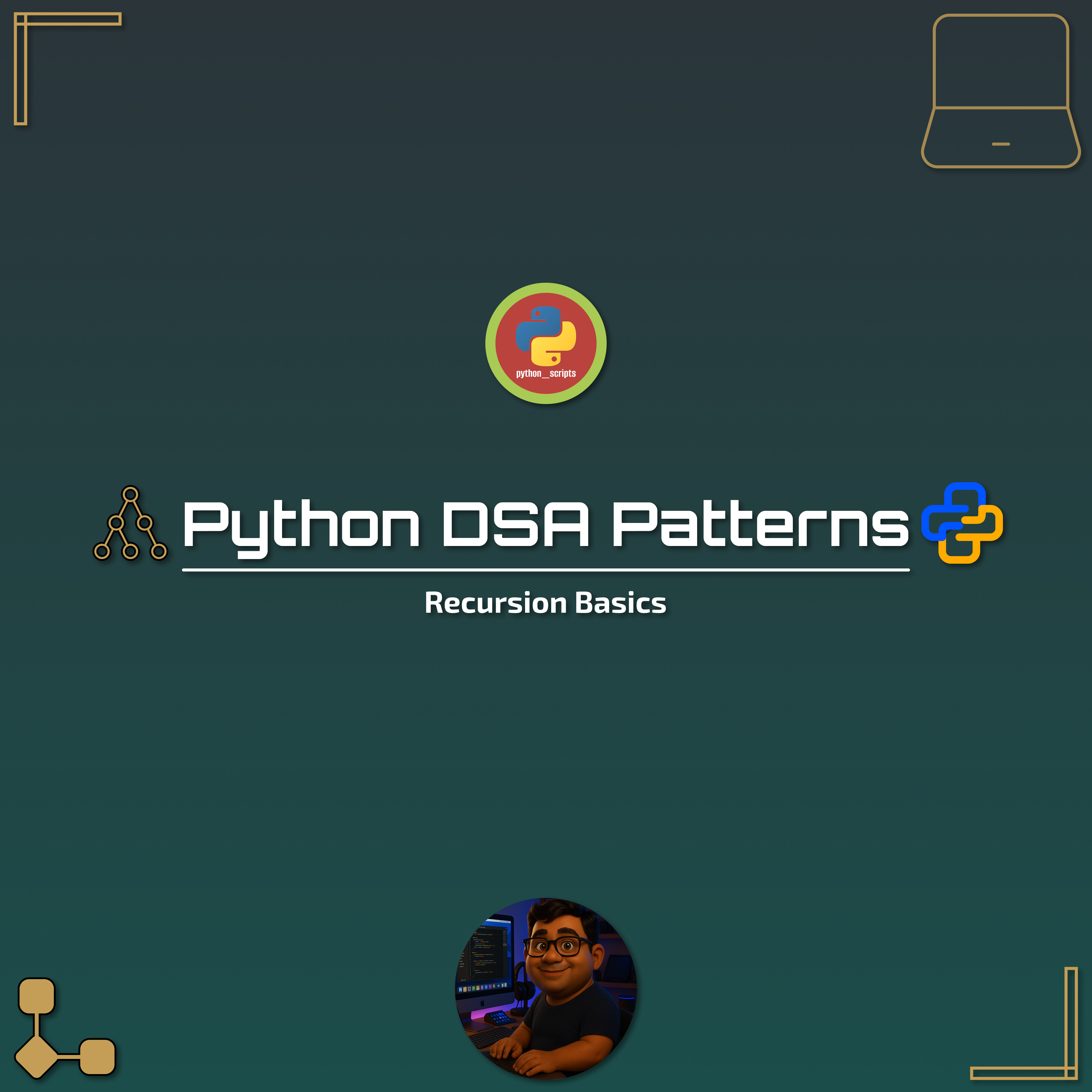🧩 Python DSA Patterns — Dynamic Programming 🧠🐍
Posted On: October 17, 2025
Description:
Dynamic Programming (DP) is one of the most important patterns in algorithm design.
It solves complex problems by breaking them into overlapping subproblems and storing results to avoid redundant work.
DP turns exponential-time recursion into polynomial-time optimization.
📝 Fibonacci with Memoization (Top-Down DP)
We store already computed values in a dictionary (cache) to avoid recalculating.
def fib_memo(n, memo={}):
if n in memo:
return memo[n]
if n <= 1:
return n
memo[n] = fib_memo(n-1, memo) + fib_memo(n-2, memo)
return memo[n]
print("Fibonacci(10) with Memoization:", fib_memo(10)) # Output: 55
📝 Fibonacci with Tabulation (Bottom-Up DP)
We iteratively build from the base cases — no recursion needed.
def fib_tab(n):
if n <= 1:
return n
dp = [0] * (n + 1)
dp[1] = 1
for i in range(2, n + 1):
dp[i] = dp[i - 1] + dp[i - 2]
return dp[n]
print("Fibonacci(10) with Tabulation:", fib_tab(10)) # Output: 55
✅ Takeaway
- DP = Recursion + Caching (reuse previous results).
- Two main forms:
- 🧩 Top-Down (Memoization) — recursion + dictionary cache.
- 📊 Bottom-Up (Tabulation) — iteration + array buildup.
- Used in problems like Knapsack, Climbing Stairs, and Pathfinding.
🏋️ Practice Problems
- Fibonacci Numbers (Top-Down / Bottom-Up)
- Climbing Stairs (min cost / count ways)
- 0/1 Knapsack Problem
- Coin Change (minimum coins)
📂 Full Script
The blog covers the essentials — find the complete notebook with all snippets & extras on GitHub Repo 👉 Python DSA Patterns
Link copied!
Comments
Add Your Comment
Comment Added!




No comments yet. Be the first to comment!